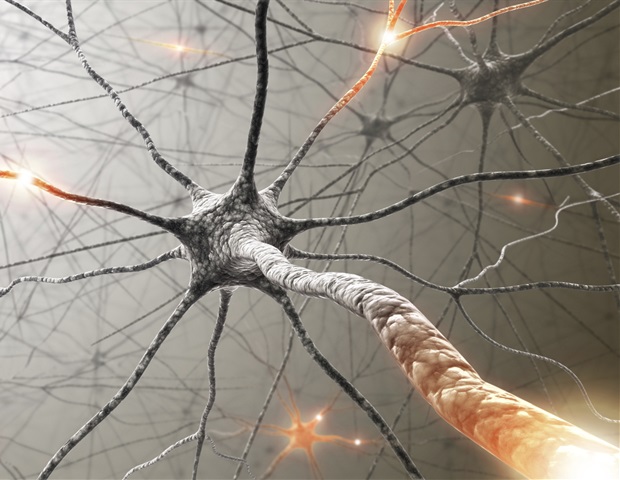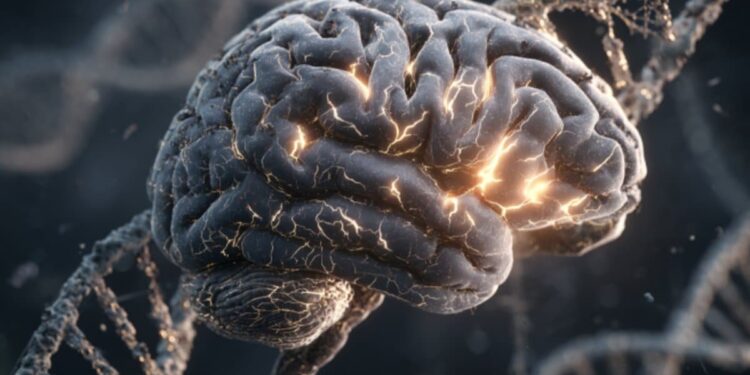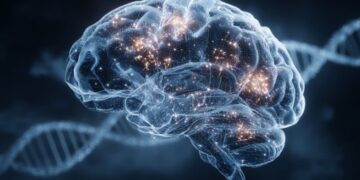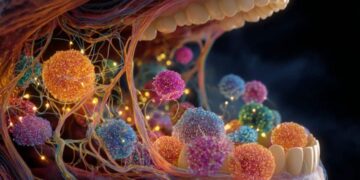Summary: New research reveals that child abuse leaves measurable biological “scars” on DNA, altering the structure and function of the brain. Using a genome-wide epigenetic analysis, the scientists identified four key methylation sites (ATE1, SERPINB9P1, CHST11 and FOXP1) linked to maltreatment.
Changes in FOXP1 were especially important and correlated with a reduction in gray matter in brain regions related to emotions and memory. These findings highlight how early trauma is imprinted in both biology and behavior, paving the way for early detection and trauma-informed care.
Key facts:
Epigenetic evidence: Four DNA methylation sites were identified as biological markers of child maltreatment. FOXP1 function: FOXP1 hypermethylation was associated with brain changes in regions involved in emotional and social processing. Predictive potential: A methylation risk score (MRS) successfully distinguished individuals with a history of maltreatment.
Source: Fukui University
Child maltreatment, including abuse and neglect, is one of the most serious public health problems worldwide. These adversities leave a lasting impact on the emotional well-being, memory and social development of those affected.
The problem, however, goes far beyond its psychological impact, affecting the brain and biological processes through genetic changes, which until now were unclear.
A recent study led by Senior Asst. Professor Shota Nishitani and Professor Akemi Tomoda of the Research Center for Child Mental Development, Fukui University, Japan, in collaboration with Professor Masataka Nagao of the Department of Forensic Medicine, Graduate School of Biomedical and Health Sciences, Hiroshima University, Japan, reveal that child abuse leaves measurable biological “scars” on children’s DNA, which leads to long-term alterations in the brain.
The study findings were published in Molecular Psychiatry on September 16, 2025.
Their research builds on previous findings by Professor Tomoda’s group, which had revealed that child abuse can alter DNA. Unlike previous studies that focused on specific candidate genes, this current work employed a broader genome-wide approach, revealing new molecular markers and linking them directly to brain structure.
Briefly, the researchers performed a detailed analysis of the epigenome (a set of chemical “switches” in our DNA that regulate gene activity) in three different groups to identify biological markers related to childhood maltreatment as trauma.
Participants included those in judicial autopsy cases, as well as young children and adolescents who had undergone protective interventions, and the adolescents also underwent brain MRIs.
“We identified four DNA methylation sites that were consistently associated with childhood maltreatment, namely ATE1, SERPINB9P1, CHST11, and FOXP1,” explains senior author Senior Asst. Professor Nishitani.
DNA methylation sites are key players in gene regulation, as they can regulate gene expressions without changing the underlying DNA sequence. While the researchers identified four different sites, the FOXP1 site was particularly significant as it acts as a “master switch” for genes involved in brain development.
The researchers found that FOXP1 hypermethylation was linked to changes in gray matter volume in the orbitofrontal cortex, cingulate gyrus, and occipital fusiform gyrus—brain regions responsible for emotional regulation, memory retrieval, and social cognition. This highlights the biological link between early trauma, brain development, and later mental health outcomes.
“Childhood trauma is not only a painful psychological experience, but also leaves lasting biological marks at the molecular and brain level,” explains Professor Tomoda.
“By identifying these epigenetic markers, we hope to develop new tools that can enable detection and support of at-risk children as early as possible.”
To use their discovery for predictive analysis, the researchers created a methylation risk score (MRS) using the four identified DNA methylation sites. The score could successfully distinguish individuals with and without a history of maltreatment using external data independent of its own, suggesting its potential as an objective screening tool to identify childhood trauma.
The importance of this discovery extends to multiple fields, including healthcare, forensics, and public health policy. In healthcare, these biomarkers could help improve early diagnosis and personalized trauma-informed treatment approaches.
While in the forensic field, it could help support investigations and support child welfare. Additionally, screening tools can also boost preventive care, reducing the long-term social impact of maltreatment.
With these implications, the study also reflects the mission of the Development Support Research Division of Fukui University, which integrates neuroscience, clinical practice and community-based approaches to promote the resilience and well-being of children and families.
The center is dedicated to advancing the science and practice of child development and mental health, and focuses on the early detection, intervention and prevention of mental health and developmental problems.
“Childhood should be a time of security and growth,” emphasizes Professor Tomoda. “Understanding how childhood trauma affects us biologically can lead to better prevention, treatment and support strategies, helping to break the cycle of maltreatment.”
Key questions answered:
A: It causes changes in DNA methylation, especially in genes like FOXP1, which influence brain development and emotional regulation.
A: The orbitofrontal cortex, cingulate gyrus, and occipital fusiform gyrus (areas linked to emotion, memory, and social cognition) show measurable gray matter alterations.
A: It provides biological evidence of the long-term effects of trauma and could lead to new diagnostic tools for early intervention and prevention.
About this research news in genetics, neurodevelopment and mental health
Author: Yuuka Kawamoto
Source: Fukui University
Contact: Yuuka Kawamoto – Fukui University
Image: Image is credited to Neuroscience News.
Original research: Open access.
“Multi-epigenome analysis and meta-analysis of child abuse in judicial autopsies and intervened children and adolescents” by Masataka Nagao et al. Molecular psychiatry
Abstract
Multi-epigenome analysis and meta-analysis of child abuse in judicial autopsies and intervened children and adolescents
Child maltreatment (CM) is associated with adverse physical, psychological, and neurodevelopmental outcomes later in life. Epigenetic modifications, particularly DNA methylation, have been proposed as possible mechanisms underlying these long-term effects.
To identify robust signatures of CM-associated methylation, we performed epigenome-wide analyzes in three independent cohorts: judicial autopsy cases (CM:11, controls:7), young children shortly after social intervention (CM:36, controls:49), and adolescents who underwent brain MRI (CM:61, controls:62).
Each cohort was analyzed separately, followed by meta-analysis to identify common methylation sites associated with MC exposure. The meta-analysis identified four major CpG sites located within the ATE1, SERPINB9P1, CHST11, and FOXP1 genes.
Among these, FOXP1 methylation was consistently associated with brain structural alterations, including increased gray matter volume (GMV) in the orbitofrontal cortex (OFrC) and middle/posterior cingulate gyrus (MPCG), and decreased GMV in the occipital fusiform gyrus (OFuG).
These brain regions are involved in emotional regulation, memory retrieval, and social cognition, suggesting a possible neurobiological mechanism linking CM to later psychopathology.
Furthermore, methylation risk scores (MRS) derived from these four CpGs successfully discriminated individuals who experienced early life adversities in an independent validation data set, achieving an area under the receiver operating characteristic curve (AUC) of 0.672, highlighting their potential utility as biomarkers.
Gene ontology and pathway analyzes revealed an enrichment of cholinergic and glutamatergic synaptic transmission pathways, supporting their involvement in the formation of traumatic memories.
Our findings provide novel insights into the epigenetic mechanisms underlying CM and identify potential biomarkers for early detection, prevention, and therapeutic intervention, ultimately contributing to breaking the intergenerational cycle of maltreatment.




















